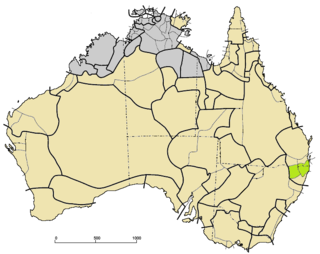| Zialo | |
|---|---|
| Ziolo | |
| Native to | Guinea |
Native speakers | 25,000 (2010) [1] |
Niger–Congo
| |
| Language codes | |
| ISO 639-3 | zil |
| Glottolog | zial1235 [2] |
Zialo (self-identification Ziolo) is a language spoken by the Zialo people in Guinea.
The Zialo are an ethnic group of Guinea. It is also the language traditionally spoken by these people.

Guinea, officially the Republic of Guinea, is a west-coastal country in West Africa. Formerly known as French Guinea, the modern country is sometimes referred to as Guinea-Conakry in order to distinguish it from other countries with "Guinea" in the name and the eponymous region, such as Guinea-Bissau and Equatorial Guinea. Guinea has a population of 12.4 million and an area of 245,860 square kilometres (94,927 sq mi).
The language of Zialo which belongs to the Southwestern group of the Mande branch of the Niger–Congo language family is spoken by approximately 25,000 people residing in the province of Macenta in the southeast of Guinea. The Zialo area covers over 50 villages (including two centers of subprefectures). Nearly a third of all Zialo live now in the nearby towns of Macenta and Guéckédou, as well as in the city of Conakry. The Zialo language does not have its own writing system; people use French in all official paperwork.
The Mande languages are spoken in several countries in Africa by the Mandé people and include Maninka, Mandinka, Soninke, Bambara, Dioula, Bozo, Mende, Susu, and Vai. There are millions of speakers, chiefly in Burkina Faso, Mali, Senegal, the Gambia, Guinea, Guinea-Bissau, Sierra Leone, Liberia, and Ivory Coast. The Mande languages have traditionally been considered a divergent branch of the Niger–Congo family, however that categorisation has been controversial.

The Niger–Congo languages constitute one of the world's major language families and Africa's largest in terms of geographical area, number of speakers, and number of distinct languages. It is generally considered to be the world's largest language family in terms of distinct languages, ahead of Austronesian, although this is complicated by the ambiguity about what constitutes a distinct language; the number of named Niger–Congo languages listed by Ethnologue is 1,540. It is the third-largest language family in the world by number of native speakers, comprising around 700 million people as of 2015. Within Niger–Congo, the Bantu languages alone account for 350 million people (2015), or half the total Niger–Congo speaking population.

Macenta is a town in southeastern Guinea, founded by the Toma people. Population 88,376.
Zialo was recognized as a distinct language and studied by the Moscow-based linguist Kirill Babaev, member of the Russian Linguistic Expedition to Guinea, in January–February 2010. Before that, Zialo was considered a remote dialect of the language of Loma, however, significant differences were discovered between the two. The tonology and phonetics of Zialo do resemble Loma, but the lexicon and the morphological systems of Zialo are closer to those of Bandi and Mende. Zialo is characterized by the extensive use of nasal vowels and consonants, the wide system of initial consonant alternations, a great number of analytic verbal constructions of time and aspect, and over 15 sets of personal pronouns. Zialo speakers name five major dialects of the language: Bayawa, Wolo-Ziolo, Woyjawa, Kelighigo and Lawolozu, of which the last one seems the most specific.

The Loma people, sometimes called Loghoma, Looma, Lorma or Toma, are a West African ethnic group living primarily in the northern mountainous, sparsely populated regions of Guinea and Liberia. Their population was estimated at 330,000 in the two countries in 2010. They are closely related to the Mende people.
Mende is a major language of Sierra Leone, with some speakers in neighboring Liberia. It is spoken by the Mende people and by other ethnic groups as a regional lingua franca in southern Sierra Leone.
The Zialo probably came to their present location from the south, the present-day territory of Liberia, as indicated by their legends. Nowadays, the majority of Zialo are Christians; there are also groups of Muslims and animists.

Liberia, officially the Republic of Liberia, is a country on the West African coast. It is bordered by Sierra Leone to its northwest, Guinea to its north, Ivory Coast to its east, and the Atlantic Ocean to its south-southwest. It covers an area of 111,369 square kilometers (43,000 sq mi) and has a population of around 4,900,000. English is the official language and over 20 indigenous languages are spoken, representing the numerous ethnic groups who make up more than 95% of the population. The country's capital and largest city is Monrovia.





